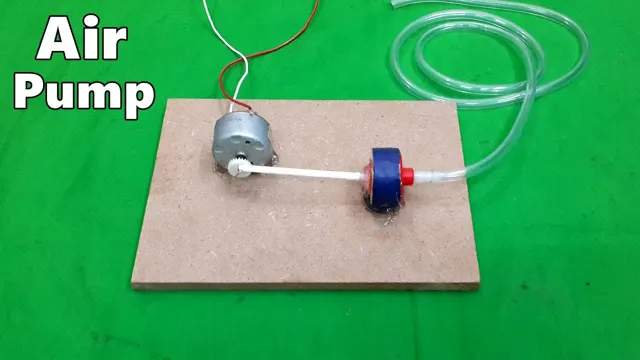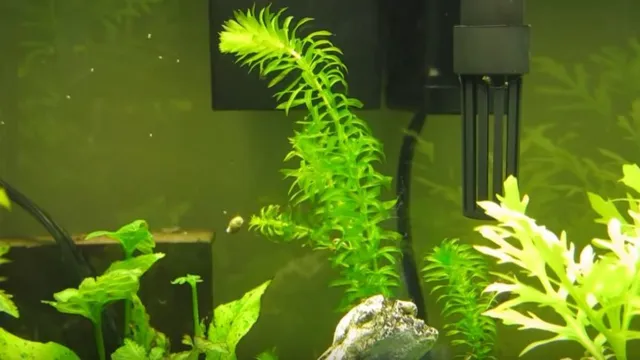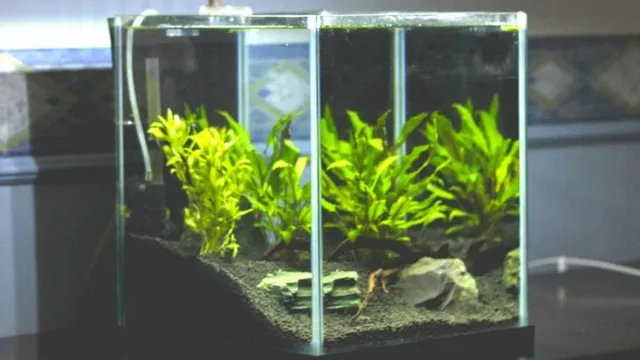How to check CO2 ppm in aquarium: Tips and Tools for Accurate Measurement
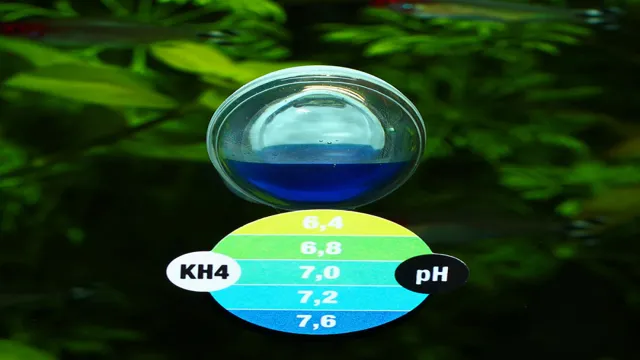
Do you have an aquarium at home? It’s always a delightful sight and therapeutic to watch the beautiful fishes swimming around, but do you know what the ideal CO2 ppm is for your aquarium? Not having proper CO2 levels can negatively impact the health of your aquatic plants and fish. That’s why it’s essential to regularly check the CO2 levels in your aquarium and create a suitable environment for your aquatic friends to thrive. Maintaining the right CO2 ppm in aquariums requires a delicate balancing act.
Too much or too little CO2 can damage the pH levels, harming the plants and fishes’ overall health. While there are various tools you can use to check the CO2 levels, identifying the perfect ppm can still be challenging. However, with the correct knowledge and guidance, keeping your aquarium’s CO2 ppm in check can be a breeze.
This blog will help you understand why checking the CO2 ppm in your aquarium is crucial and how to maintain the ideal CO2 levels for your aquatic ecosystem. We’ll also highlight a few tips and tricks to keep your aquarium thriving, from introducing aquatic plants to the benefits of having a CO2 regulator. So, sit back, relax, and dive into the world of checking CO2 ppm in an aquarium.
Discover how to provide the perfect environment for your aquatic life and maintain healthy, balanced water chemistry – it’s a reef-sational experience!
Understanding CO2 in Aquariums
If you’re wondering how to check CO2 ppm in your aquarium, there are a few different methods you can use. One of the most popular is to use a drop checker, which is a small device that contains a pH-sensitive solution. You fill the drop checker with water from your aquarium and add a few drops of pH reagent to it.
As your CO2 levels change, the pH of the solution inside the drop checker will also change, which will give you an idea of what your CO2 ppm levels are. Another option is to use a CO2 indicator solution, which you add to your aquarium water and watch for changes in color. Alternatively, you can invest in a more high-tech CO2 monitor that will give you accurate, real-time readings of your CO2 levels.
Whatever method you choose, it’s important to keep a close eye on your CO2 levels to ensure that your plants are getting the right amount and that your fish aren’t being adversely affected.
What is CO2?
CO2, aquariums CO2, or carbon dioxide, is a gas that is an important part of the ecosystem. In aquariums, CO2 plays a crucial role in supporting plant life, which in turn helps maintain a healthy environment for fish. Understanding the role of CO2 in aquariums is essential for any aquarium owner, particularly those who are keen on creating and maintaining a thriving aquatic environment.
CO2 is naturally present in aquarium water, but it can also be added manually. This can be done using CO2 injection systems which allow for precise control of CO2 levels in the water. CO2 is mainly used by plants during photosynthesis to produce glucose, which is the energy they need to grow and maintain their health.
This process also helps to oxygenate the water, which is essential for the health and well-being of the fish. Maintaining the right levels of CO2 in the water is crucial for plant growth and fish health. Too little CO2 can lead to slow plant growth, while too much can harm fish and cause water quality issues.
It’s vital to monitor CO2 levels regularly and adjust as necessary. In conclusion, CO2 is a critical component of aquarium ecosystems when used correctly. By understanding how CO2 works in aquariums, it’s possible to create a thriving environment for plants and fish alike.
Regular monitoring and adjustments can help aquarium owners ensure that their aquatic pets live healthy, happy lives in a safe and welcoming environment.
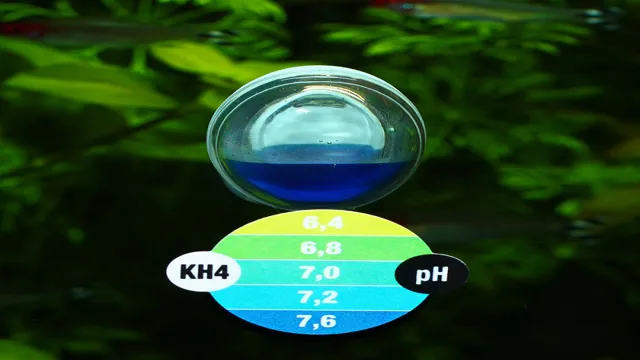
Importance of CO2 in Aquariums
CO2, aquariums CO2, short for carbon dioxide, is an important factor to consider for maintaining a healthy environment in your aquarium. Understanding how CO2 levels affect your fish and overall tank health is crucial for beginner and experienced aquarists. When CO2 levels are too low, plants cannot efficiently carry out photosynthesis, leading to a lack of oxygen production, which can ultimately lead to fish death.
On the other hand, high levels of CO2 can be toxic and cause fish to become stressed, leading to illness or death. It is important to constantly monitor CO2 levels in your aquarium and to adjust accordingly with appropriate equipment, such as CO2 diffusers or regulators. The ideal CO2 levels for a planted aquarium is typically around 30 ppm, but it is important to research and understand the specific needs of the plants and fish in your aquarium.
Investing in a good CO2 system can greatly benefit the overall health and appearance of your aquarium.
Ideal CO2 Levels for Aquariums
Aquarium CO2 levels Maintaining ideal CO2 levels in aquariums is critical for the overall health and well-being of aquatic species. Carbon dioxide plays a vital role in photosynthesis, which is the process by which plants and algae produce oxygen, absorb nutrients, and grow. In aquariums, CO2 is often injected into the water to ensure plants have sufficient nutrients and provide a healthy environment for fish and other aquatic species.
The ideal range of CO2 concentration for aquariums is between 25 and 35 ppm (parts per million), but this varies depending on the type of aquatic plant species and the size of the tank. Aquarium hobbyists can use various methods to regulate CO2 levels in their tanks, such as CO2 injection systems, liquid CO2 supplements, or natural sources such as plants, snails, and fish. Maintaining proper CO2 levels in aquariums not only enhances the visual aesthetics of the tanks but also promotes the health and longevity of aquatic species.
Methods to Check CO2 ppm in Aquariums
Checking the CO2 ppm levels in your aquarium is crucial for maintaining a healthy aquatic environment. There are a few different methods you can use to measure the CO2 concentration in your tank. One way is to use a drop checker, which contains a pH indicator solution that changes color based on the CO2 concentration.
Another option is to use a CO2 indicator test kit, which involves adding a reagent to a water sample and observing a color change. You can also use a digital CO2 monitor that uses infrared technology to measure the CO2 levels. Whichever method you choose, it’s important to regularly test and adjust your CO2 levels to ensure your fish and plants are thriving.
With these tools and techniques, you can create a thriving aquatic environment with just the right amount of CO
Using Drop Checker Kits
When trying to maintain the perfect condition for your aquarium, it’s crucial to monitor the CO2 levels regularly. One of the best ways to do this is by utilizing a drop checker kit. These kits are designed to check the ppm of CO2 in your aquarium water and indicate any imbalances in the levels.
The process of using these kits may seem complicated, but it’s quite simple. All you have to do is fill the drop checker with indicator solution, insert it into your aquarium, and wait for it to change color. The color shift will indicate the CO2 levels, and you can make adjustments accordingly.
Remember, a drop checker kit is a tool that can make it easier for you to monitor and fine-tune your aquarium’s CO2 levels, but it’s essential to understand the science behind it and make changes accordingly to maintain a healthy environment for your aquatic pets.
Using pH Test Kits
If you’re an aquarium owner, it’s crucial to keep an eye on the CO2 levels in your aquarium. An imbalance in CO2 levels can be harmful to the health of your aquatic plants and fish. One way to check the CO2 ppm in your aquarium is to use a pH test kit.
This kit involves adding a few drops of indicator solution to a water sample from your aquarium and noting the color change. By comparing the color change to a chart provided with the kit, you can determine the pH level and estimate the CO2 concentration. Another way to measure CO2 levels is to use a drop checker.
A drop checker is a small, glass device that sits inside your aquarium and contains a solution that changes color based on the CO2 concentration. By monitoring the color of the drop checker, you can adjust the CO2 levels in your aquarium as needed. Regularly checking your aquarium’s CO2 levels can help you maintain a healthy environment for your aquatic pets and plants.
Using Continuous CO2 Testing Probes
If you have an aquarium in your home, it’s essential to monitor the carbon dioxide (CO2) levels to ensure that your fish and plants are thriving. One way to do this is by using continuous CO2 testing probes, which are designed to provide real-time readings of CO2 levels in water. These probes are easy to install and use, and they can be incredibly helpful in maintaining a healthy aquarium environment.
They work by using a sensor that measures the dissolved CO2 in the water, which is then displayed on a digital screen. By monitoring these readings regularly, you can ensure that your CO2 levels are within the optimal range for your fish and plants to thrive. With continuous CO2 testing probes, you can take charge of your aquarium’s environment and ensure that it remains healthy and vibrant.
Tips for Maintaining CO2 Levels in Aquariums
Maintaining appropriate levels of CO2 in your aquarium is essential for the health and survival of your aquatic plants and creatures. The first step in ensuring proper CO2 levels is to measure the ppm or parts per million of CO2 in your aquarium water. You can use various tools like a drop checker or a CO2 test kit to determine the levels of CO
Once you know the ppm, you can adjust the CO2 levels through various methods like adjusting the bubble rate of your CO2 diffuser, increasing or decreasing the surface agitation, or adjusting the light intensity. It’s important to maintain consistent CO2 levels in your aquarium, so be sure to monitor the ppm regularly and make adjustments as necessary. By taking these steps and checking the CO2 ppm in your aquarium, you can create a healthy and vibrant aquatic environment for your fish and plants to thrive in.
Maintaining Consistent CO2 Levels
Maintaining consistent CO2 levels in aquariums is vital for the health and wellbeing of your fish and plants. One of the essential tips for keeping CO2 levels steady is to have a substrate that is rich in nutrients. A nutritious substrate provides an environment for beneficial bacteria to thrive, which aids in the conversion of ammonia to nitrite and nitrate.
A planted aquarium also helps in maintaining CO2 levels by utilizing carbon dioxide released by fish during respiration and nutrients produced through fish waste. Ensuring proper water flow and surface agitation also helps in oxygenating the water and prevents CO2 buildup. If you’re struggling to maintain consistent CO2 levels in your aquarium, consider investing in a CO2 monitoring system that can help you measuring levels accurately.
By taking these measures, you can ensure that your aquarium is healthy and thriving.
Adjusting CO2 Levels as per Aquarium needs
Maintaining CO2 levels in aquariums is crucial for the health and well-being of your aquatic pets and plants. CO2 levels that are too low can stunt plant growth and make it difficult for fish to breathe, while levels that are too high can harm both fish and plants. One way to maintain proper CO2 levels is to use a CO2 injection system, which releases CO2 into the water at a controlled rate.
Another option is to add aquarium-safe acids, such as citric acid or vinegar, which release CO2 when they dissolve in water. It’s important to monitor CO2 levels regularly with a reliable test kit and adjust the concentration as needed. A good range for most aquarium settings is between 20-30 ppm (parts per million).
By keeping an eye on CO2 levels and making adjustments as needed, you can ensure a healthy and thriving aquarium environment for all your aquatic friends.
Conclusion
In conclusion, checking CO2 levels in your aquarium is crucial for creating a healthy and thriving environment for your aquatic pets. Whether you choose to use a drop checker or a CO2 monitor, it’s always a good idea to keep an eye on your ppm levels and adjust accordingly. Remember, just like in life, maintaining a proper balance is key – too little CO2 and your plants won’t thrive, too much and your fish may suffer.
So, happy testing and may your aquarium stay beautifully balanced!”
FAQs
What is the ideal range of CO2 ppm in an aquarium?
The ideal range of CO2 ppm in an aquarium is between 20-30 ppm.
How can I measure CO2 ppm levels in my aquarium?
CO2 ppm levels can be measured using a drop checker or using an electronic CO2 meter.
What are the signs of low CO2 levels in an aquarium?
Signs of low CO2 levels include poor plant growth, algae growth, and fish gasping for air at the water surface.
How often should I check the CO2 levels in my aquarium?
It is recommended to check CO2 levels at least once a week, but can be checked more frequently if necessary.
What are some ways to increase CO2 levels in an aquarium?
CO2 levels can be increased by using a CO2 injection system, adding CO2 tablets, or using liquid carbon supplements.
Can high CO2 levels harm fish or other aquatic life?
Yes, high CO2 levels can harm fish and other aquatic life, causing stress and even death. It is important to ensure CO2 levels remain within the optimal range.
How can I maintain consistent CO2 levels in my aquarium?
Consistent CO2 levels can be maintained by using a CO2 regulator, monitoring CO2 levels regularly, and making adjustments as necessary.

